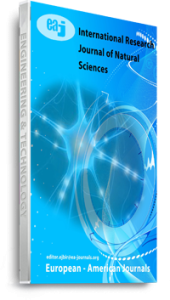Soil and water contamination resulting from petroleum spill is a regular environmental concern in recent times. The level of penetration and movement of C5-C9, C10- C26 and C26-C40 hydrocarbons through the soil layers were assessed to determine the distribution and the chemical similarity of these compounds over the contaminated area. A supplicated Chemometric technique was employed in this analysis whereby Principal Component Analysis (PCA) was adopted to interpret and classify chemical characteristics of the samples by Cluster analysis. Samples were analysed using gas chromatography equipped with a flame ionisation detector (GC-FID).It was also found that total petroleum hydrocarbon concentrations varied from 11-402 mg kg-1 topsoil, 9-337 mg kg-1 subsoil and 13-184 mg kg-1 at the greatest depth measured. The results indicated high levels of total hydrocarbon contents when compared with the controlled samples. This work provides informative strategy to control further spills and choose the type of remediation processes to adopt.
Keywords: Chemometric Analysis, GC-FID, Petroleum Spill, Total Hydrocarbon

